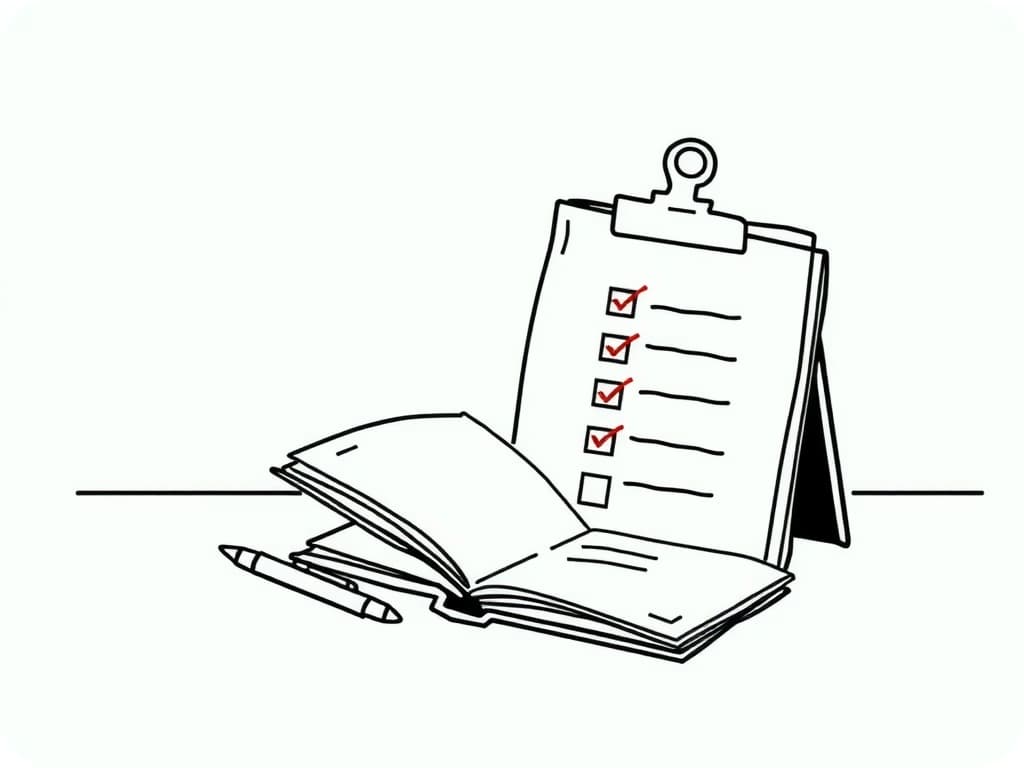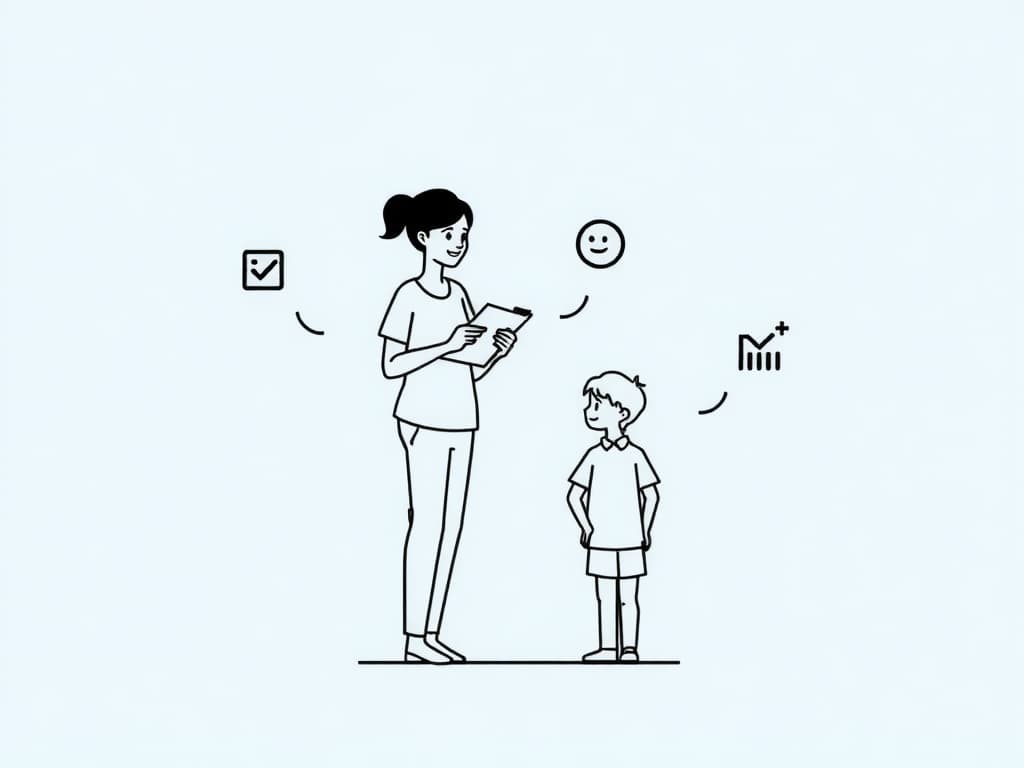RBT Elopement Documentation: ABC Data Guide

RBT Elopement Documentation: A Comprehensive Guide for ABA Safety
Elopement, the sudden and unplanned departure from a safe environment, poses a grave danger to children with autism spectrum disorder (ASD). Research indicates that about 45% of them engage in this behavior, often leading to risks like drowning or traffic injuries Occurrence and Family Impact of Elopement in Children With Autism Spectrum Disorders. For Registered Behavior Technicians (RBTs), mastering RBT elopement documentation isn't just a compliance checkbox—it's a lifeline for ensuring client safety in applied behavior analysis (ABA) therapy. This guide equips you with evidence-based strategies to document elopement objectively, turning raw data into actionable insights that protect your clients and support effective interventions.
Next, we'll cover the risks of elopement and why documentation matters, along with practical steps.
Key Takeaways from This Guide
- Grasp the high-risk nature of elopement and its impacts in ABA settings.
- Learn to create clear operational definitions for accurate measurement.
- Master ABC data collection to identify behavior functions.
- Differentiate session notes from incident reports for compliance.
- Avoid common documentation pitfalls to enhance team communication.
Understanding Elopement as a High-Risk Behavior in ABA
Elopement involves an individual leaving a designated safe area without permission. It often stems from functions like escape from demands or access to sensory stimulation. In ABA settings, this behavior affects nearly half of children with ASD, with 26% of incidents causing significant caregiver concern due to potential harm Occurrence and Family Impact of Elopement in Children With Autism Spectrum Disorders. Elopement heightens risks such as drowning (24% of cases) or traffic injuries (65%), making it a priority for immediate intervention Occurrence and Family Impact of Elopement in Children With Autism Spectrum Disorders.
RBTs encounter elopement during sessions, transitions, or unstructured times. Quick response and documentation prevent escalation. Recognizing its high-risk nature aligns with BACB guidelines, emphasizing safety protocols to mitigate dangers.
What are the main triggers? Overwhelming environments or unmet needs often spark it. The impacts? They reach emotional distress for families and legal liabilities for providers.
Early identification through observation helps tailor prevention strategies.
The Importance of Objective RBT Elopement Documentation
Objective RBT elopement documentation ensures data drives functional behavior assessments (FBAs) and behavior intervention plans (BIPs). It reduces recurrence by addressing root causes. Accurate records facilitate team collaboration, compliance with insurance and ethical standards, and measurable progress tracking. As outlined in the BACB RBT Task List (2nd Edition), documentation must be factual to support evidence-based adjustments.
Without it, interventions falter, increasing safety risks and audit failures. For instance, precise logs reveal patterns, enabling modifications like antecedent strategies.
How does it benefit teams? It informs BIPs and family training. It also upholds the RBT Ethics Code by prioritizing client welfare.
Consistent documentation bolsters legal protection during incidents.
For more on foundational practices, check our ABA Documentation Best Practices for RBTs: Essential Tips.
Creating Operational Definitions for Elopement Data Collection
An operational definition pinpoints elopement as observable actions. Consider "leaving the classroom boundary by more than 10 feet without adult permission." This clarity prevents subjective interpretations, ensuring reliable data across observers. The Pathfinders for Autism guide on school elopement stresses defining specifics like distance or duration for consistency in school or home settings.
RBTs develop these under BCBA supervision, aligning with the client's environment. Vague definitions lead to inconsistent tracking, undermining interventions.
Start with measurable criteria: location, distance, intent. Test for inter-observer agreement to validate accuracy.
Refine based on FBA findings for precision.
Measuring Elopement: Frequency, Duration, and Latency
Frequency counts elopement occurrences per session. It's ideal for high-rate behaviors to gauge intervention impact. Use a tally counter during observations, dividing by time for rate (e.g., 3 instances per hour). In functional analyses, frequency differentiates conditions, as per BT Exam Review (2023).
Duration times how long the client remains away, from exit to return. Use a stopwatch for episodes up to several minutes. This measures persistence, informing safety needs like tracking devices.
Latency captures the delay from a trigger (e.g., demand presentation) to elopement start. It's useful for low-frequency risks to minimize repeats. A 2018 study in Treating Elopement Without Running: Use of Functional Assessments highlights latency's role in school assessments, revealing quick responses to stressors.
Combine these for comprehensive insights; graph data weekly.
See our RBT Session Note Checklist: Compliance Essentials for tracking templates.
Step-by-Step ABC Data Collection for RBT Elopement Incidents
ABC data breaks down elopement into antecedents (A), behavior (B), and consequences (C) to uncover functions like attention-seeking. For elopement ABC data RBT practices, start by preparing: Define elopement operationally and use a digital or paper sheet with columns for A, B, C, time, and location.
Step 1: Observe the antecedent—note what precedes, like a transition or noise. Step 2: Record the behavior precisely, e.g., "Client ran 20 feet from therapy room at 2:15 PM." Step 3: Document consequences, such as pursuit or reinforcement, per ABA Matrix (2023).
Collect in real-time or immediately after for accuracy, aiming for 5-10 incidents before analysis. Review with your BCBA to hypothesize functions.
Why prioritize ethics here? Maintain confidentiality and obtain consent. Tools: Apps for timestamping enhance reliability.
This method, rooted in ABA standards, supports targeted BIPs.
Differentiating Session Notes, Incident Reports, and Post-Incident Follow-Up
Session notes summarize overall progress, including elopement mentions within daily activities. They focus on goals met and minor data. In contrast, incident reports detail high-risk events like elopement. They cover safety actions and immediate outcomes for compliance. BACB guidelines (2025 Handbook) require distinguishing these to ensure HIPAA adherence and audit readiness.
For post-incident follow-up, document debriefs, parent notifications, and BIP updates within 24 hours. Include risk assessments and prevention tweaks.
Session notes offer broad, objective summaries. Incident reports provide detailed, chronological facts. Follow-up stays action-oriented, with outcomes tracked.
This flow prevents oversights in documenting high-risk behavior ABA.
Common RBT Mistakes in Elopement Documentation and Fixes
A frequent error is subjective phrasing, like "Client seemed upset," instead of observables like "Client vocalized loudly before leaving." Fix by sticking to BACB's objective standards. Train on measurable terms (ICANotes, 2023).
Another pitfall: Incomplete ABC details, omitting absences of risks. Address by using checklists to verify all elements.
Overusing templates without customization leads to inaccuracies; tailor notes per session. Delay in reporting incidents risks data loss—document immediately.
Vague language counts as a mistake; use verbs describing actions to fix it. No links to BIPs? Reference goals explicitly.
Regular supervision catches these, per RBT Ethics Code.
The RBT's Role in Communicating Elopement Data to the Team
RBTs share elopement data via graphs, summaries, and meetings. They highlight trends for BCBA review. Submit weekly reports with raw data and interpretations, fostering collaborative BIPs. As per Supportive Care ABA (2023), this ensures fidelity and ethical practice.
Communicate urgently for incidents, notifying supervisors and families promptly. Use secure platforms for confidentiality.
Prepare visuals: Charts showing frequency reductions. Discuss barriers: Like environmental factors.
Your input drives safer, effective therapy.
FAQ
What are the most effective ABA interventions for reducing elopement?
Effective interventions include Functional Communication Training (FCT) to replace elopement with requests and differential reinforcement of alternative behaviors (DRA). Multicomponent plans, like antecedent modifications and blocking, reduce rates significantly, as shown in the Pace University study on elopement interventions (PDF). Consistency across settings improves outcomes in responsive cases.
How can I effectively document elopement incidents as an RBT?
Document immediately using objective terms: time, location, distance traveled, and ABC details. Avoid subjectivity; instead, note "Client exited room at 10:15 AM, traveled 30 feet." BACB guidelines (2020 Task List) require factual records linked to safety plans for compliance and intervention adjustments.
How does ABC data collection help develop intervention plans for elopement?
ABC data identifies functions, like escape from demands, guiding targeted BIPs such as teaching coping skills. Patterns from 5-10 incidents inform antecedent strategies, reducing elopement by addressing triggers. Cross River Therapy (2023) notes this data-driven approach enhances FBA accuracy and long-term success.
How can I ensure my documentation is objective and free from bias?
Focus on observable facts: what you see, hear, or measure, not interpretations. Use operational definitions and inter-observer checks for reliability. Per ABA best practices (CentralReach, 2023), this aligns with ethics, preventing errors in audits and supporting unbiased interventions.
What strategies can reduce elopement during school transitions?
Implement visual schedules and verbal prompts to ease transitions, paired with reinforcement for staying put. A study (2018) found these, combined with FBA, cut elopement by 70% in classrooms. Train on safe zones and use timers for predictability.
How does latency measurement differ from frequency in assessing elopement?
Latency measures time from trigger to elopement start, ideal for dangerous, low-frequency behaviors to avoid repeats. Frequency counts occurrences, suiting high-rate analysis. Artemis ABA (2023) explains latency provides function insights safely, while frequency tracks overall prevalence.
RBT elopement documentation empowers RBTs to transform risky behaviors into manageable patterns through precise, evidence-based practices. Backed by BACB standards and recent research, objective recording not only ensures compliance but also enhances client safety and therapy efficacy. Ultimately, your diligent notes contribute to holistic ABA success, reducing incidents and building secure environments.
To apply this: Review your current definitions with a supervisor this week, practice ABC logging on mock scenarios, and integrate data into team meetings for feedback. These steps will sharpen your skills and safeguard those you serve.
Popular in ABA Session Notes & Tools
- 1
RBT Supervision Documentation: 2025 BACB Guide & Templates
1,2469 min read - 2
Master ABA Medical Necessity Documentation: Avoid Denials
5719 min read - 3
Master ABA SOAP Notes: Guide for RBTs & BCBAs
5239 min read - 4
ABA Documentation Best Practices for RBTs: Essential Tips
4935 min read - 5
Guide to ABA Progress Reports for Insurance Reauthorization
4258 min read
Popular in ABA Session Notes & Tools
- 1
RBT Supervision Documentation: 2025 BACB Guide & Templates
1,2469 min read - 2
Master ABA Medical Necessity Documentation: Avoid Denials
5719 min read - 3
Master ABA SOAP Notes: Guide for RBTs & BCBAs
5239 min read - 4
ABA Documentation Best Practices for RBTs: Essential Tips
4935 min read - 5
Guide to ABA Progress Reports for Insurance Reauthorization
4258 min read
Related Resources
Explore more helpful content on similar topics

ABA Documentation Best Practices for RBTs: Essential Tips
Struggling with ABA documentation best practices for RBTs? This FAQ covers RBT session notes, ABC recording tips, ethical standards, and compliance with BACB, HIPAA, and insurance requirements to streamline your workflow and ensure accuracy.

RBT Supervision Documentation: 2025 Compliance Guide
Master RBT supervision documentation with this step-by-step guide to compliant notes. Learn BACB requirements, key elements for supervision notes ABA, and prep for 2026 changes to stay certified and excel in ABA.

BIP Documentation RBT: Step-by-Step Guide for Accurate Notes
Learn essential BIP documentation RBT strategies for ABA therapy. Master behavior intervention plan notes, BACB-compliant templates, and common pitfalls to boost client progress and compliance. Discover step-by-step guides now!